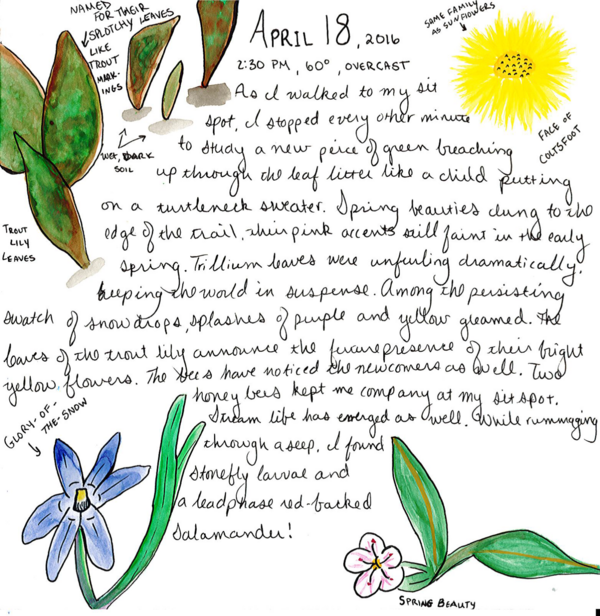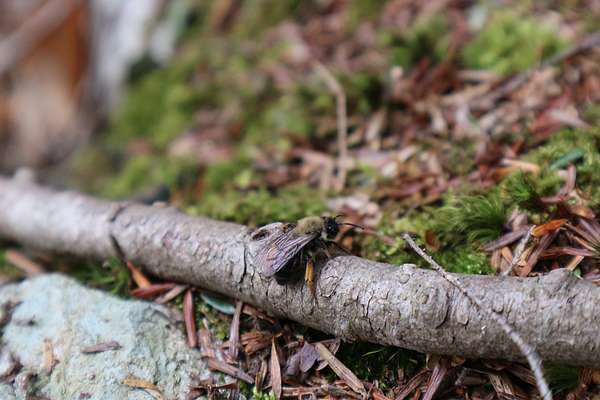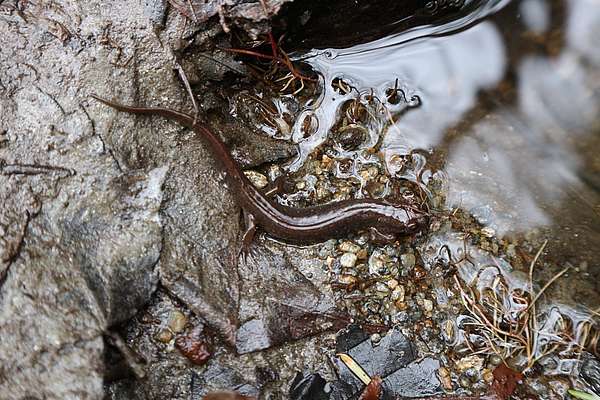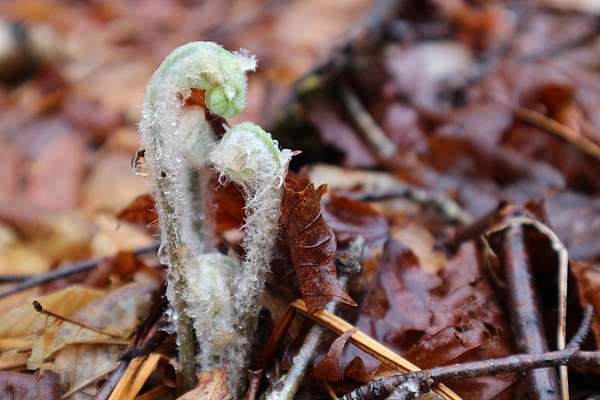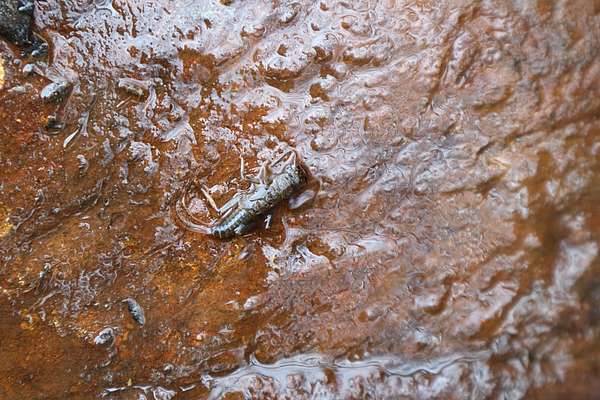April 18, 2016
2:30 pm, 60 degrees, overcast
When I finally got out to the mill trail today, clouds had beaten back the sun to take over the sky. The wind had picked up a little too, making me grateful I brought a sweater. I walked down to the water, stopping every 5 feet to take a picture of a new piece of green breaching up through the leaf litter like a child putting on a turtleneck sweater. Spring beauties populated the edges of the trail, while trillium leaves began to dramatically unfurl on the slopes. Among the persisting snowdrops, splashes of purple and yellow poked up as glory-of-the-snow and coltsfoot began to open. Trout lily leaves have emerged, but the flowers have yet to even bud. At my sit spot, two honeybees mistook the little hemlock cone mandala I was crafting for an early spring flower.
Poking around in the nearby seep, I found a stonefly nymph clinging to the bottom of a rock. Stoneflies are extremely sensitive to pollutants in the water. They need cold, fast flowing, high oxygen water to survive. Their presence tells us that the quality of the seeps flowing into the West Branch of the Little River are very clean!
Lifting up a layer of sodden leaves, I spotted a salamander that I couldn’t identify at first. It was the wrong color to be a dusky northern Salamander, did not have the distinct appearance of a two-lined salamander, and was the wrong habitat for a four-toed salamander. One of the most abundant salamanders in Vermont is the red-backed salamander. Curiously, this one did not have the distinctive red stripe running down its back. It turns out that there are a handful of color morphs, or members of the same species with different coloration,of red-backed salamanders. Some of these lack pigment altogether and appear a milky white, or are red all over resembling the red eft phase of the eastern newt. This one appears to be a ‘lead phase’ of the red-backed salamander, lacking the red band. In some populations, around 30% of red-backed salamanders are lead phase.
